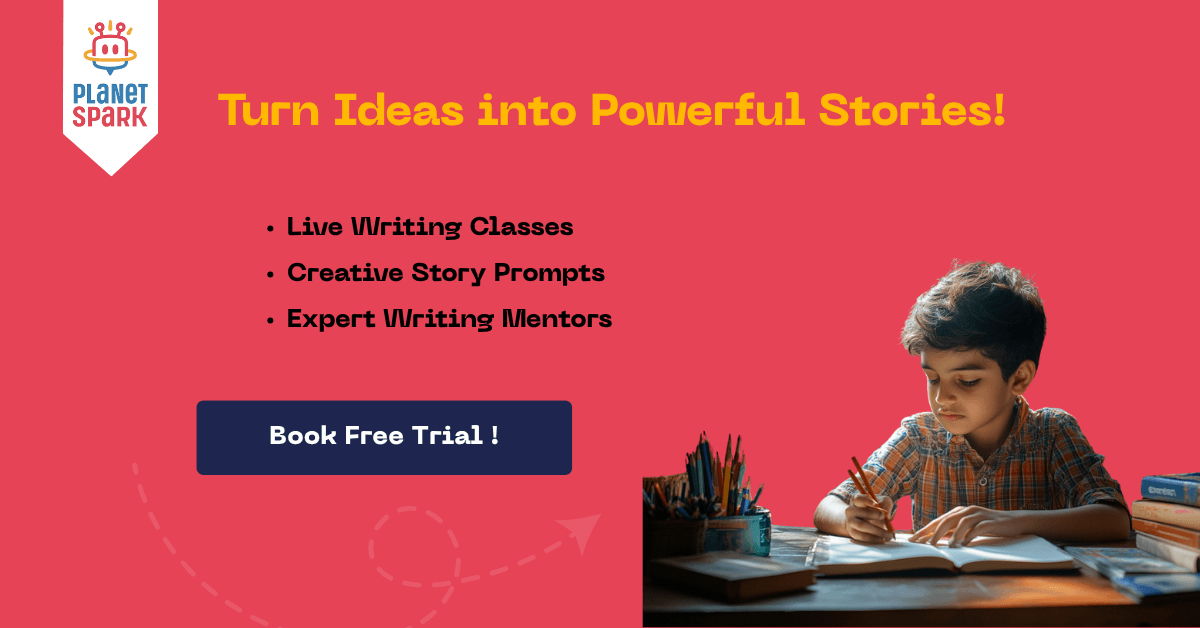Are Grades an Accurate Reflection of a Student’s True Learning

Table of Contents
- Understanding What Grades Represent
- The Limitations of Grades
- Embracing Multiple Intelligences
- Emotional Learning vs. Academic Performance
- The Risk of Labeling and Comparison
- Celebrating the Process, Not Just the Product
- Reimagining Feedback: From Grades to Guidance
- The Role of Parents: Reframing Success at Home
- Beyond Academics: What Prepares Kids for Life
- Integrating Creative Education in Schools
- What the Future of Learning Should Look Like
- What Grades Do Offer
- Beyond the Report Card: Signs of True Learning
- Grades vs. Growth: What Matters More
- Real-World Skills Often Go Ungraded
- What Should Be Done Instead
- Reframing Success for Kids
- Conclusion:
- FAQs
In classrooms across the world, a simple letter or percentage often becomes the defining metric of a child’s academic ability. For generations, grades have acted as the go-to standard for evaluating learning, effort, and potential. But are grades truly an accurate representation of learning? Or are they merely a narrow snapshot of a student's performance in a given moment?
In this blog, we’ll dive deep into the nuances of academic grading, explore its benefits and shortcomings, and examine whether grades truly reflect the depth and quality of a child’s learning.
Understanding What Grades Represent
Grades are intended to measure a student's understanding of a particular subject. Typically, they’re based on a combination of class participation, homework, quizzes, tests, and projects. On paper, this appears to be a comprehensive system. However, the way learning is assessed can differ greatly between schools, teachers, and even countries.
In many cases, a high grade may indicate that a student has memorized facts well or performed under pressure, but it may not necessarily reflect critical thinking, creativity, or real-world application.
Example: A student might score 95% in an English test by memorizing grammar rules but struggle when asked to write a compelling story or express ideas creatively.
The Limitations of Grades
Here are several key reasons why grades might not always be an accurate reflection of a student’s learning:
1. Focus on Memorization Over Understanding
Many exams reward students for rote memorization rather than meaningful understanding. A student might learn to regurgitate definitions or formulas without grasping their practical use or context.
2. Test Anxiety and Pressure
Some students, especially younger ones, experience extreme anxiety during exams. Even if they’ve studied well, fear can interfere with performance, leading to lower grades that don’t reflect their true ability.
3. Different Learning Styles
Every child learns differently. Some excel in visual or hands-on environments, while others shine through storytelling or group discussions. Standardized grading systems rarely account for these diverse learning styles.
4. Unequal Access to Resources
Grades can also reflect socio-economic factors. A student with access to private tutoring, a quiet study environment, or parental help might outperform someone who doesn’t have those advantages - even if both are equally capable.
5. Creativity Isn’t Always Measured
Creative thinking, imagination, and innovation are often difficult to grade. A child who tells wonderful stories or solves problems in unconventional ways might not earn top marks in traditional testing formats.
Embracing Multiple Intelligences
The traditional grading system often centers on linguistic and logical-mathematical skills- reading comprehension, grammar, math problems, and science formulas. But what about children who excel in musical, interpersonal, spatial, or kinesthetic intelligence? Howard Gardner’s theory of multiple intelligences highlights that students express brilliance in diverse ways that can’t be measured by a pen-and-paper exam.
A child who struggles with writing essays may be an exceptional communicator in verbal debates. Another might struggle with numbers but shine when building structures with blocks or designing visual art. Grades, unfortunately, rarely capture these alternative forms of intelligence. When we limit our assessment scope, we risk overlooking future innovators, artists, leaders, and storytellers.
This is why creative writing platforms, like PlanetSpark’s, play a crucial role - they allow children to express their ideas freely, strengthening areas that traditional schools might miss entirely.
Emotional Learning vs. Academic Performance
Grades focus almost entirely on cognitive ability, with little to no emphasis on emotional growth. But emotional intelligence (EQ)-which includes self-awareness, empathy, motivation, and social skills - is as crucial as IQ in determining long-term success.
Let’s consider two students:
Student A scores straight A’s but struggles to collaborate in a group.
Student B earns average grades but is empathetic, curious, and confident in expressing feelings.
Which student is better equipped for leadership or life’s real challenges?
We need to encourage learning that goes beyond the textbook and speaks to emotional maturity. Recognizing children for acts of kindness, collaboration, or ethical decision-making helps validate values that no grading rubric currently assesses.
The Risk of Labeling and Comparison
Grades create an environment of constant comparison, especially in formative years. When a child is consistently told they are an “average student” because they score Bs or Cs, it can shape their self-perception for life. They may stop trying or believe they’re not capable of excelling.
On the flip side, students who always score A+ may fear failure so much that they become perfectionists, anxious at any sign of struggle. In both cases, learning becomes associated with pressure, not passion.
What we need instead is a learning culture that celebrates curiosity, questions, and effort, not just correctness.
Celebrating the Process, Not Just the Product
One of the most overlooked aspects of real learning is the process. Problem-solving, brainstorming, trial-and-error, and revising drafts - all of these are crucial to deep learning. Yet, grades often measure only the result.
For instance, a student may spend days crafting a short story, revising it multiple times, and overcoming writer’s block, but may still receive an average grade due to grammar errors. The focus stays on what’s “wrong” rather than applauding the creativity, persistence, or storytelling arc.
By valuing the process, teachers and parents can encourage growth, resilience, and a genuine love for learning.
Reimagining Feedback: From Grades to Guidance
Constructive feedback is far more effective than a letter grade. Comments such as “You explained this point very well, try elaborating further on the next paragraph,” or “This was an original idea - can you build on it?” help children grow. They learn what they did well, what needs improvement, and how to move forward.
In contrast, a B+ or C- offers no direction. It simply tells the student they didn’t meet the benchmark, without explaining how or why.
Narrative - whether written or verbal- humanizes the learning process and fosters a student-teacher relationship built on trust, not judgment.
The Role of Parents: Reframing Success at Home
Parents play a critical role in shifting the narrative around grades. When report cards arrive, the instinct is to ask, “What marks did you get?” Instead, try questions that open discussion and reflection:
“What part of this subject do you enjoy the most?”
“Was there something you struggled with? Why?”
“Is there something you’re proud of that isn’t reflected in your grades?”
By validating effort, improvement, and emotional resilience, parents can help children see that learning is an evolving journey, not a fixed score.
Beyond Academics: What Prepares Kids for Life
Think about the skills needed to succeed in today’s world: adaptability, creativity, communication, collaboration, leadership, and resilience. These are not subjects on a report card, yet they determine success in the workplace and beyond.
When children engage in creative writing, storytelling, or oral communication, they learn to organize thoughts, empathize with characters, think critically, and express emotions - all vital life skills.
This makes programs like PlanetSpark not just supplemental, but essential.
Integrating Creative Education in Schools
Many forward-thinking schools are already integrating creativity into their curriculum through:
Storytelling sessions
Drama and speech classes
Podcasting projects
Creative journaling
Digital storytelling and multimedia creation
But the momentum is slow. Parents and educators must advocate for a shift in how we define success in school, less about test scores, and more about transferable, real-world skills.
A simple writing assignment - like imagining a new planet or narrating a story from an animal’s perspective - can nurture both academic and emotional intelligence.
What the Future of Learning Should Look Like
To prepare students for an unpredictable, rapidly changing future, education must:
Foster curiosity and inquiry
Encourage mistakes as stepping stones
Blend academic and emotional development
Support diverse talents - not just academic achievers
Grades can still be but as one of many tools, not the sole measure of progress. True learning is not about getting everything “right” - it’s about asking better questions, trying new things, and growing from the experience.
What Grades Do Offer
While grades aren’t perfect, they do offer certain benefits:
1. A Basic Benchmark
Grades provide a standardized way to measure performance across subjects. They help schools, colleges, and parents assess whether a student is meeting minimum academic expectations.
2. Encouragement and Motivation
In some cases, good grades can motivate students to push themselves harder. It offers a sense of achievement and measurable progress.
3. Short-Term Accountability
Grades can hold students accountable for staying on top of their assignments, attending class, and preparing for tests.
Beyond the Report Card: Signs of True Learning
Grades may tell part of the story, but true learning is deeper and more lasting. Let’s explore what real learning looks like beyond the grade book:
1. Curiosity and Questioning
Children who ask “why” and “how” demonstrate active engagement. A child curious about space, asking questions about planets and stars, is showing real interest, regardless of their science grade.
2. Application of Knowledge
Learning is evident when students can apply concepts in real-life scenarios. For instance, understanding how to calculate change during shopping is more valuable than scoring full marks on a math worksheet.
3. Collaboration and Teamwork
Group projects, discussions, and problem-solving games build essential life skills that can’t be easily captured by a letter grade.
4. Creative Expression
Whether through writing, storytelling, drawing, or performing, creativity reveals a child’s ability to synthesize knowledge, think independently, and connect ideas.

Grades vs. Growth: What Matters More
A student who receives a C in their first attempt but improves to a B over time is demonstrating learning and growth. However, a grading system that only focuses on final scores may overlook this improvement.
The growth mindset, as coined by psychologist Carol Dweck, emphasizes effort and progress over perfection. Students who are encouraged to learn from their mistakes tend to develop resilience, motivation, and a lifelong love for learning.
Grades may capture a moment, but growth captures the journey.
Real-World Skills Often Go Ungraded
Modern careers demand more than subject knowledge. Employers and educators value:
Communication skills
Problem-solving
Leadership
Emotional intelligence
Creative thinking
Most of these aren't reflected in a report card. A student who accesses written tests might not be able to collaborate effectively or think creatively, skills essential for future success.

What Should Be Done Instead
While eliminating grades may not be practical, complementing them with alternative evaluation methods can provide a fuller picture of a student’s abilities.
1. Portfolio Assessments
Let students showcase their work across subjects - stories, essays, art projects, science models - to reflect diverse talents and efforts.
2. Project-Based Learning
Projects encourage teamwork, creativity, and real-world problem-solving. They help kids connect theory with practice in meaningful ways.
3. Peer Reviews and Self-Reflection
Allowing students to evaluate their progress builds self-awareness and accountability.
4. Narrative Feedback
Teachers can offer descriptive feedback rather than just marks. Comments like “You showed great creativity here” or “Try explaining this in your own words” are more constructive than a letter grade.
Reframing Success for Kids
Success shouldn't be limited to topping the class. A child who improves their handwriting, overcomes the fear of public speaking, or completes a story independently deserves as much recognition as a high-grade student.
Instead of asking “What grade did you get?” try asking:
“What did you learn?”
“What did you enjoy the most?”
“Where do you want to improve?”
These questions open up dialogue and show that you value effort and growth over numbers.
Give your child a creative edge with PlanetSpark’s Creative Writing Program - designed by experts to develop imagination, structure, and original thinking.
Conclusion:
Grades provide a convenient snapshot of academic performance, but they don’t always capture the full picture of learning. True learning is about curiosity, exploration, creativity, and growth - qualities that often lie outside the boundaries of a report card.
As parents, teachers, and mentors, it’s essential to look beyond grades and support kids in developing a love for learning, a passion for questioning, and the confidence to express themselves.
At PlanetSpark, we believe that creativity and expression are key to lifelong learning. Our courses are designed to nurture these qualities while building practical writing and communication skills that empower students far beyond school.
FAQs
1. Why aren’t grades always an accurate measure of learning?
Ans. Grades often emphasize memorization and exam performance, ignoring factors like creativity, problem-solving, and personal growth.
2. What are better alternatives to grading?
Ans. Portfolios, project-based learning, narrative feedback, and self-reflection offer a more holistic view of student abilities.
3. How can I help my child develop beyond grades?
Ans. Encourage creativity, ask open-ended questions, support hobbies, and enroll them in programs that promote thinking and expression, like PlanetSpark’s Creative Writing courses.
4. What skills does PlanetSpark’s Creative Writing course teach?
Ans. It enhances storytelling, vocabulary, grammar, logical thinking, and emotional expression through expert-led lessons and fun activities.
5. At what age should kids join a creative writing program?
Ans. PlanetSpark offers age-appropriate modules for kids as young as 6, with increasing complexity as they grow.
Personalized Communication Report
Record a video to get a AI generated personalized communication report for your child

Hi There, want to try these
tips for your child with
LIVE with our expert coach?
Let's check your child's
English fluency
